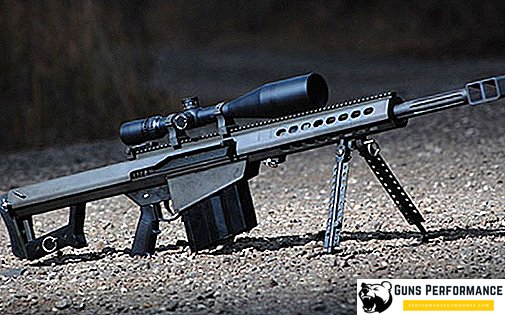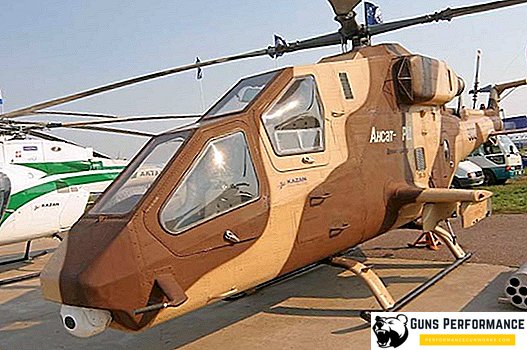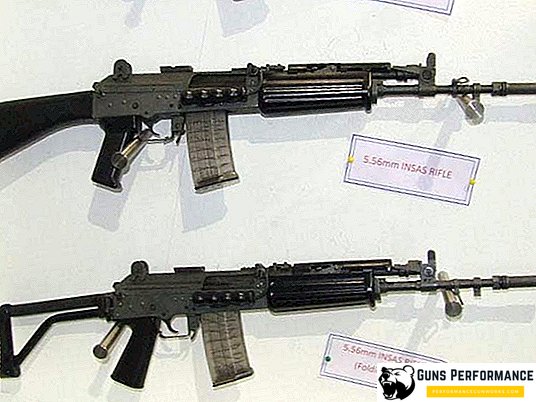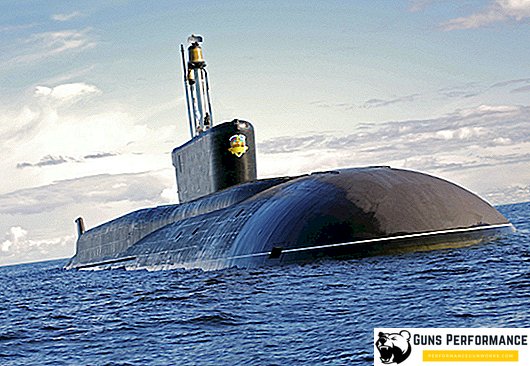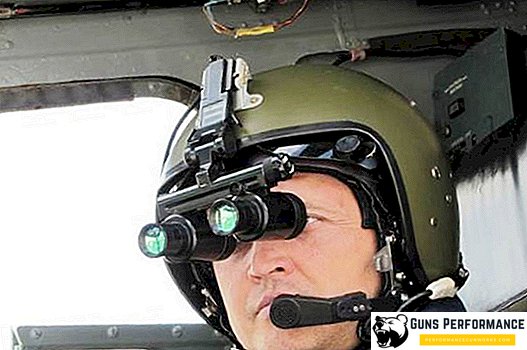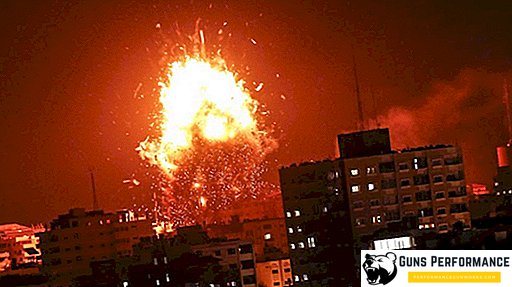Among the variety of small arms, created by designers in the last century, it is possible to highlight the samples that had the greatest influence on the further development of weapons business. The appearance of some of them can be called a real turning point in the history of the development of small arms. A striking example of this can be the story of the first assault rifle Sturmgewehr (Stg.44), which can be safely called the forerunner and inspirer of the appearance of such legendary weapons as the AK-47 assault rifle and the FN FAL rifle.
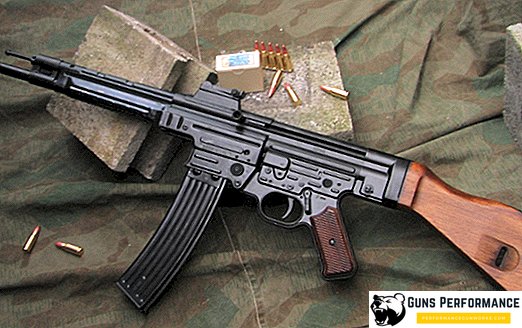
The German automatic rifle Sturmgewehr 44 was really good for its time: for the first time, this weapon provided a place to install a rifle grenade launcher, a telescopic sight, and other mounted devices. According to legend, the name for this weapon (Sturmgewehr, which means "assault rifle") was coined by Hitler himself. However, all of the above is nothing more than “cherries on the cake”, and the most important achievement of Stg.44 was his ammunition, which caused a real revolution in weapons business.
Sturmgever was indeed the weapon of the elite. For him, even the world's first night-vision infrared night-sight Zielgerät 1229 Vampir was developed. It consisted of the actual sight (weighing 2.25 kg) and a battery (13.5 kg), which the soldiers carried in a wooden box behind them. "Vampire" was actively used in the last year of the war, although its range did not exceed one hundred meters.
The history of the creation of this weapon began even before the Second World War, in the mid-thirties of the last century.
A bit of history
After the Nazis came to power in Germany, the rapid rearmament of the German army began. It touched and small arms. The German military leadership wanted better weapons than their potential adversaries. One of the promising areas for the development of small arms, the Germans considered the creation of an intermediate cartridge, as well as new weapon systems for it.
At that time, the armies of the world basically used either pistol or rifle cartridges. The rifle ammunition had excellent accuracy and firing range, but was too powerful. This led to an increase in the mass of weapons, to the complexity of its design, to a decrease in the number of portable ammunition. The range of the rifle bullet reached two kilometers, but most of the firing contacts occurred at distances of 400-500 meters (and even less in urban areas). Moreover, the production of such ammunition required more resources.
The rifle cartridge was not suitable for the creation of automatic weapons of the new generation.

The pistol cartridge was not powerful enough, and its ballistics can hardly be called ideal. It is effective at distances of up to 200 meters, which is clearly not enough for the infantry’s main weapon. Numerous submachine guns made before the war and during it were a clear confirmation of this.
Work on the creation of an intermediate ammunition has been going on since the beginning of the twentieth century, but the Germans succeeded in creating the first production model: in 1940, the weapons company Polte introduced an intermediate cartridge of 7.92 × 33 mm Kurz.
Even before the start of the war in Germany, the concept of rearming the army with a system created for an intermediate cartridge was developed. At that time, the German army had three main types of small arms: a submachine gun, a magazine rifle, and a light machine gun. A new automatic weapon, made for an intermediate cartridge, was to completely replace the submachine gun and the magazine rifle, as well as partly a light machine gun. The German military expected with the help of new weapons to significantly increase the firepower of rifle formations.
In 1938, the Wehrmacht Arms Directorate concluded C.G. Haenel, whose owner was Hugo Schmeisser, the contract for the creation of an automatic carbine for a new intermediate cartridge. New weapons received the abbreviation MKb.
At the beginning of the 40th year, Schmeisser handed over to his customers the first samples of a new weapon made for the cartridge 7.92 × 33 mm Kurz. In the same year, another well-known German arms company, Walther, received a similar task.

At the very beginning of 1942, both companies presented their modified MKb samples (MKbH and MKbW), they were shown to Hitler. Walther’s weapons were deemed too complicated and capricious. Sample Schmeisser differed simpler device and robust design, it was more convenient to disassemble.
New weapons received the designation MKb.42 and for further testing was sent to the Eastern Front. Frontal tests finally confirmed the superiority of the sample created by Haenel, but the military still demanded some changes to the design.
By the middle of 1943, the Schmeisser rifle was put into service and once again changed its name. Now this weapon was designated by the abbreviation MP-43A (MP-431). It was made more than 14 thousand units of this system. This was followed by a small revision of the weapon, in the end it received the name MP-43 and remained almost unchanged until the very end of the war. In early 1944, the rifle received a new abbreviation - MP-44.
In September 1943, the new rifle was subjected to large-scale troop testing, it was armed with the 5th Panzer SS Viking Division on the Eastern Front. The rifle received the highest accolades, it significantly increased the firepower of infantry units.
New weapons demonstrated to Hitler. Prior to this, he received a large number of excellent reviews about him from the generals and the leadership of the military-industrial complex of Germany. The fact is that Hitler was against the development and adoption of a new class rifle. On the other hand, it is believed that the final name of this automatic rifle - "assault rifle" or StG.44 - was coined by the Führer personally.
Sturmgever entered service with the Waffen-SS and selected units of the Wehrmacht. In total, until the end of the war, about 400 thousand units of these weapons were produced (for comparison, the MP-38/40 produced about 2 million units throughout the war). This weapon began to appear only at the final stage of the war and did not have a significant impact on its course. The problem was not its quantity (it is quite impressive), but the lack of ammunition for Stg.44.
The catastrophic situation with ammunition for the new assault rifle is noted in their memoirs by the German generals. However, on the whole, Stg.44 proved to be from the best side both in terms of accuracy, and simplicity of design, and its manufacturability.
After the end of the war, Sturmgever was used by the police of the GDR, the German army, the armed forces of several other European countries. There is information that in Syria the warehouses where several thousand of these weapons were located were seized by the opposition and now these machines are actively used by both parties to the conflict.

Device
Automation Stg.44 works by removing a portion of the powder gases from the barrel. Gases move back bolt carrier with bolt. The barrel bore is locked by skewing the shutter (unlike turning the shutter in the Kalashnikov assault rifle).
Trigger trigger type. Stg.44 is able to conduct both single and burst fire. The fuse blocks the trigger.
Food is made from a box-shaped double-row magazine with a capacity of 30 rounds. The sight is sector, it allows shooting at a distance of up to 800 meters.
The recoil spring is placed inside the wooden stock, making it impossible to create a modification with a folding stock.

Advantages and disadvantages of Stg.44
“Sturmgever” can be called a revolutionary example of small arms. However, like any new weapon, Stg.44 had its own "childhood diseases". Eliminate them from the developers just did not have enough time. In addition, we should not forget that Stg.44 is the first weapon of this kind.
Disadvantages:
- too much weight compared to a conventional rifle;
- fragility of the receiver;
- unsuccessful sights;
- weak spring in stores;
- no forearm.
Benefits:
- excellent shooting accuracy at close and medium distances;
- convenience and compactness;
- excellent rate of fire;
- good ammunition performance;
- universality in combat conditions.
As you can see, the disadvantages of Stg.44 are not critical, and they could be easily remedied by conducting only a small weapon upgrade. But Germany no longer had time to correct mistakes.

Some experts believe that if Stg.44 appeared a few years earlier, the war could have had a different ending. But history does not tolerate subjunctive moods.
Sturmgewehr (Stg.44) and Kalashnikov assault rifle
In April 1945, the Americans occupied the town of Suhl in Thuringia, where Hugo Schmeisser’s company was based. The gunsmith himself was arrested, but after the Americans were convinced that he was not a Nazi and did not commit crimes, the designer was released. Americans are absolutely not interested in his weapon. They believed that their M1 carbine is much better than Stg.44.
The thought was completely different in the Soviet Union. Work on the creation of weapons under the intermediate cartridge began in the USSR in 1943, immediately after the appearance of the first German trophy samples. After the city in Germany, where the Schmeisser enterprise was located, was ceded to the Soviet occupation zone, all technical documentation for Stg.44 was removed from the factory.
Further more. In 1946, serious people came to the 62-year-old Schmeisser and made him an offer from the category of those who are not refused. He, as well as the employees of his company, together with their families, went to the USSR, or more specifically, to the city of Izhevsk, where at that time there was intense work on the creation of a new machine gun.
Disputes about the relationship of the Kalashnikov assault rifle and Stg.44 are still going on and their heat does not subside. Was the AK a copy of a German assault rifle? No, of course, they are different and very seriously. But the question whether the Stg.44 experience was taken into account when creating the Soviet automaton can be definitely answered in the affirmative. To do this, just look at their appearance and design. It is important to emphasize that when creating any successful scheme, all the available results of the predecessors are used. “Sturmgever” was not a secret for Kalashnikov, but it is not a prototype of its automaton - but just one of the successful examples that turned out to be useful in creating a design that is fundamentally more sophisticated and universal.
Technical characteristics of Stg.44:
- weight, kg: 5.2;
- length, mm: 940;
- barrel length, mm: 419;
- initial speed of the bullet, m / s: 685 (bullet weight 8.1 g);
- caliber, mm: 7.92;
- cartridge: 7.92 × 33 mm;
- sighting range, m: 600;
- type of ammunition: sector magazine for 30 rounds;
- sight: sector;
- rate of fire, shots / min: 500-600.


